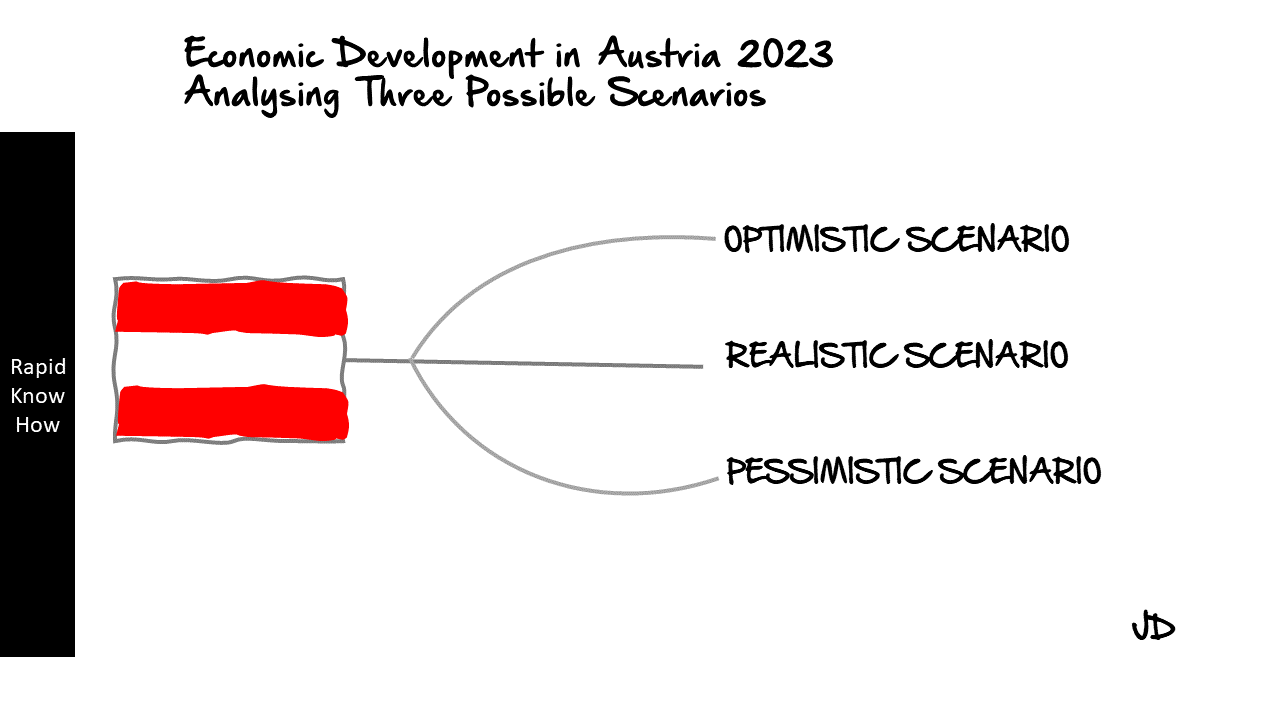The economic outlook for Austria in 2023 is subject to a variety of factors, including global economic trends, domestic policy decisions, and the ongoing impact of the COVID-19 pandemic. In this analysis, I will outline three potential scenarios: a realistic scenario based on current trends and projections, a pessimistic scenario that considers potential negative impacts, and an optimistic scenario that assumes favorable conditions and outcomes.
1. Realistic Scenario:
The realistic scenario for Austria’s economy in 2023 is one of moderate growth. The International Monetary Fund (IMF) projects that Austria’s GDP will grow by 2.8% in 2023, which is slightly lower than the expected global average of 3.6%. This growth is expected to be driven by a rebound in consumer spending as the effects of the pandemic recede, as well as continued strength in sectors such as manufacturing and services.
Inflation is projected to remain relatively low at around 2%, while unemployment is expected to decrease slightly from its current level of around 5%. The government’s fiscal position is likely to improve as tax revenues increase with economic growth and spending on pandemic-related measures decreases.
However, this scenario assumes that there are no major shocks to the global or Austrian economy, such as a new wave of COVID-19 infections or a significant escalation in geopolitical tensions.
2. Pessimistic Scenario:
The pessimistic scenario for Austria’s economy in 2023 involves a slower recovery from the pandemic and weaker global economic growth. In this scenario, Austria’s GDP growth could fall below 2%, with sectors such as tourism and hospitality continuing to struggle.
Unemployment could remain high if businesses are unable to fully recover from the pandemic or if there are significant job losses in sectors affected by long-term trends such as automation and digitalization. Inflation could also rise above the target level if there are supply chain disruptions or increases in energy prices.
The government’s fiscal position could deteriorate if lower-than-expected growth leads to reduced tax revenues and increased spending on social support measures. This could lead to higher public debt levels and potentially affect Austria’s credit rating.
3. Optimistic Scenario:
The optimistic scenario for Austria’s economy in 2023 involves stronger-than-expected growth driven by a rapid recovery from the pandemic and robust global economic activity. In this scenario, Austria’s GDP could grow by over 3%, with strong performance across all sectors of the economy.
Unemployment could fall significantly as businesses expand and create new jobs, while inflation remains low due to efficient supply chains and stable energy prices. Consumer confidence and spending could also rebound strongly, further boosting economic growth.
The government’s fiscal position could improve significantly due to higher tax revenues and lower spending on social support measures. This could allow for increased investment in areas such as infrastructure and education, which would further support long-term economic growth.
In conclusion, while there are uncertainties surrounding Austria’s economic outlook for 2023, it is likely that the country will continue on its path of moderate growth under normal circumstances. However, potential risks such as a slower recovery from the pandemic or geopolitical tensions could lead to weaker-than-expected performance. On the other hand, favorable conditions such as a rapid recovery from the pandemic or strong global economic activity could result in stronger-than-expected growth.
